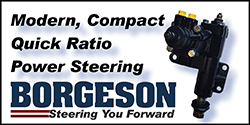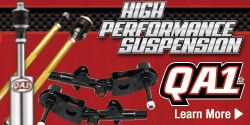I have read a lot of different theory's on how to select the correct power valve for a holley style carburetor. I have read that if you have an auto you put it in gear and take the vaccum reading when it's in gear and divide it by 2 and that's the power valve you should run. I have read you take the vaccum reading you get while cruising down the highway at 65 and divide that by 2 and then add 2 and that's the power valve you should select.
I have also read you take your idle vaccum and minus 2 from that and that's the correct power valve.
I have a quick fuel super street series 680cfm vaccum secondary carburetor and I am running it on a 300 hp crate 360 magnum in a 1991 half ton dodge power ram 150 4x4 truck. The way I determined what power valve to run was I put my truck in drive (it's and auto) and I took the vaccum reading which is 15.5 to 16.0 hg and I divided that by 2, so I decided to put an 8.5hg power valve in it. But now I am wondering if I did that wrong. How do you guys select the power valve you want to run?
I am now wondering if I should hook up a vacuum gauge and go cruise around on the highway and take my cruising at 65 vaccum and divide that by 2 and then add 2 to that and select a power valve based on that.
I was just curious to see how you guys go about selecting power valves and am curious to know if you think I did it the right way, or if you think I should select a power valve based on my cruising vaccum numbers.
I have also read you take your idle vaccum and minus 2 from that and that's the correct power valve.
I have a quick fuel super street series 680cfm vaccum secondary carburetor and I am running it on a 300 hp crate 360 magnum in a 1991 half ton dodge power ram 150 4x4 truck. The way I determined what power valve to run was I put my truck in drive (it's and auto) and I took the vaccum reading which is 15.5 to 16.0 hg and I divided that by 2, so I decided to put an 8.5hg power valve in it. But now I am wondering if I did that wrong. How do you guys select the power valve you want to run?
I am now wondering if I should hook up a vacuum gauge and go cruise around on the highway and take my cruising at 65 vaccum and divide that by 2 and then add 2 to that and select a power valve based on that.
I was just curious to see how you guys go about selecting power valves and am curious to know if you think I did it the right way, or if you think I should select a power valve based on my cruising vaccum numbers.
















